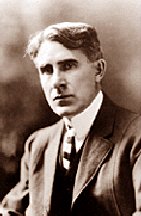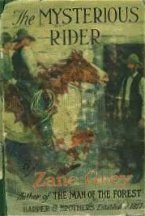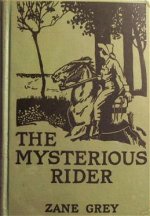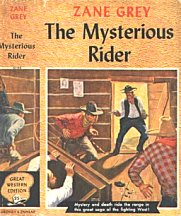Part II
The Mysterious Rider
Two of the more popular musical groups of the
1980s were Culture Clash and Boy George's Culture Club. They were
from England which was being invaded by peaceful infiltration by a number
of different cultures. The popular response of these groups divined
that the issue was not 'race' or skin color but one of cultures.
In any clash of cultures the most intolerant
must win- that is the culture that clings to its customs while rejecting
all others. To be tolerant is to be absorbed by the triumphant culture.
This was the meaning of the German term Kulturkampf of the pre-Great War
period.
Historical examples are too numerous to mention, suffice it say that
the ancient Cretan culture was defeated by the Mycenean while both
were derailed by later Greek invasions. Eventually Greek culture
supplanted the Cretan which was lost to history.
The English being the most tolerant of people
will lose their culture to a Moslem-Negro combination which will undoubtedly
be absorbed by the Chinese. This is an incontestable evolutionary
fact it has nothing to do with anyone's opinion.
While the movement of peoples may be an unavoidable
fact of life it is folly for a superior more productive culture to sacrifice
itself to a lesser by misguided notions of tolerance.
Evolutionarily the problem is not the cosmetic
one of skin color as most HSIIs and IIIs imagine.
Apart from the evolutionary problem of genetics
the social problem of cultures is of prime importance. Not all cultures
are of the same quality nor is this a matter of relativity. For instance
it is generally agreed that female circumcision is an evil to be avoided
but among the Africans where it is prevalent their culture stoutly defends
the procedure along with polygamy. In France where large numbers
of Africans are invading, French culture denies the validity of both female
circumcision and polygamy hence the culture clash between the two notions
of society will be determined by numbers and will. Given the increasing
numbers of Moslems and Africans in France among which polygamy is an established
custom and given their superior will and intolerance to the HSIIs of France,
it is merely a matter of time before polygamy and female circumcision become
permissible thus changing French society as the French themselves adopt
Semitic and African customs.
Only a small percentage of the French, English
or Americans recognize the danger to their cultures. They must naturally
be as intolerant of the culture of the invaders as the invaders are intolerant
of theirs. As a minority among their respective peoples they are
derided by the majority as bigots while the perhaps benign and tolerant
opinion of the majority can lead only to their own elimination as history
and evolution clearly shows.
America of the nineteenth century with its
open and unrestricted immigration was the first country, other than Russia
which also was involved with these difficulties, to come to grips with
the problem of clashing cultures. The official American position
was one of tolerance. Absorption of the large African population
was a poser, but among the HSIIs and IIIs the cultural differences were
not so great as to be an insuperable obstacle although assimilation as
between the Anglos and the Irish, for instance was painful and slow while
still incomplete to this day as large numbers of Irish consider themselves
Irish first and Americans second but generally Northern Europeans blended
reasonable well.
Then in the 1870s just at the same time
that both Zane Grey and Edgar Rice Burroughs were born the focus of immigration
shifted to Eastern and Southern Europe. This influx continued unabated
up to 1914 when it was interrupted by the Great War. While earlier
immigration might be characterized as troublesome the Eastern and Southern
European immigration presented a real culture clash.
The cultural differences between Northern Europeans
and Eastern and Southern Europeans are actually quite striking. Rightly
or wrongly, as you may choose to see it, contemporaries of Burroughs and
Grey believed that, at least, the Jews and Italians were unassimilable,
which is to say, they were not prepared to abandon their customs to blend
into the whole but wished to impose their customs on the whole. Indeed
this has proven to be the case. If you don't object there is no problem.
As representatives of the founding culture
of the United States men like Burroughs and Grey could not but see the
new immigration as a threat to their life style which has proven to be
true. Thus the generation of Teddy Roosevelt who was born in 1858
were the heroes of the younger generation. Roosevelt and his generation
represented things as they should have been in their eyes. When TR
died in 1919 a vision of hope flickered out for Burroughs' and Grey's generation.
The poem 'The American' reprinted in Part IV
of my Four Crucial years in the ERBzine will give some idea of the frustration
experienced by the Burroughs/Grey generation just as they were coming of
age.
Burroughs grew up in one of the most polyglot
centers of the world. The Anglos in Chicago were in a distinct minority
being no more than 10% of the population in 1890. Grey practiced
his dentistry in New York City in which Anglos were as small a percentage
of the population.
Neither man was a hateful bigot which is not
to say that they couldn't help but be affected by the diversity of languages
and customs which they encountered everyday in what they considered to
be their country. It would be silly to say that they or any rational
Anglo didn't regret the sitution. That the absorption of all this
diversity into a semblance of homogeneity was made without undue violence
must always be to the credit of the American social organization.
That organizations of frustrated individuals like the American Protective
Association or the KKK arose is not to be wondered at especially in the
face of very aggressive and terrorist immigrant organizations such as the
Mafia and the Anti-Defamation League of the B'nai B'rith.
Both Burroughs and Grey began writing at the
very height of unrestricted immigration. There is every reason to
expect the influence of immigration to be reflected in their writing for
the period of the 'teens. After 1920 conditions changed which is
reflected in Burroughs' writing although I am unread in Grey after the
'teens.
Burroughs of course transposed his social and
religious conflicts to Mars, Pellucidar and his vision of Tarzan's Africa
where they were fought out on an allegorical level much in the style of
Johnathon Swift.
Grey on the other hand transposed the problem
to an earlier period in the American West where he avoided the problem
of foreign activities concentrating on culture clashes of Mormonism, cattle
and sheep ranching and matters of the like. Thus the Mormon-Gentile
battle of the mid-mineteenth century could be compared to the Jewish-Gentile
confrontation of the 'teens which Grey would have been facing but would
have been unable to discuss without being labeled an anti-Semite or bigot.
Both writers could also translate social problems
into psychological terms as they did. Both men suffered from a fair
degree of emasculation which is most notably represented in Grey's work
especially the three of his novels under consideration
In The Mysterious Rider he examines
the same Animus problems as he did in Riders Of The Purple Sage
but under different conditions.
His protagonist, Hell Bent Wade of MR, answers
to that of Lassiter in ROTPS. Wade possessed a violent and ungovernable
temper as a young man which led him to murder his wife and a man he mistakenly
believed to be her lover. Discovering his error he brought his temper
under control becoming mild mannered like Lassiter but helpful and with
more character; still his youthful reputation follows him, blighting his
life.
Wilson Moore may be seen as another version
of Venters while the Mormon Animus is represented by the rancher, Bill
Bellounds and his son Jack. His Anima figure in this story is an
orphan girl named Columbine, Collie, after the flower.
Old Bill Bellounds (Hounds of Hell?) is a big
rancher in Colorado who took Columbine (In good conscience I can't call
her Collie which is the name of a dog. What subconscious motives
were in Grey's mind- faithful as a Collie?) in as a child and raised
her as his own. This is a recurring motif in Grey. Now he want
her to marry his son Jack. Jack is no good. Bad man.
As an Animus figure he is the wild ungovernable aspect. He is crazed
having no behavioral controls.
Columbine is placed between what she considers
her duty to the man she had always known as dad and her own desire which
is a love for Wilson or Wils Moore.
Moore is just the opposite of Jack Bellounds.
He is gentle, sensitive, conscientious, hard working, kind, loving, just
an all around great guy of the emasculated Animus sort. Grey, who
has all the attributes of the emasculated man may have thought of him as
a sort of self-portrait. Grey always holds up as his model of the
virtuous man the long suffering type who endures injustice to the point
of being crippled or even killed before he retaliates, if he does.
In this case Wilson Moore is crippled for life
by Jack Bellounds with barely a thought of even self-defense. Hell
Bent Wade, the protagonist who had the ungovernable temper as a youth,
a reformed Lassiter, is now feminized to the point where he is willing
to serve as a male nurse.
Thus he nurses Moore back to physical health,
but mutilated, while he keeps Moore's mind straight.
He is unable to do anything with Jack Bellounds
who though he wants to win the love of Columbine is incapable of reforming.
His drinking and gambling lead him into a situation where he is rustling
cattle from his father.
A show down occurs between him and Hell Bent
in which by giving Jack every chance he is shot by Jack while at the same
time killing the latter. We are expected to admire this self-sacrifice.
Thus Wils and Columbine are united. Mutilated virtue prevails.
Grey always manages an interesting tale with
good detailing so the reading of the novel was OK qua story but written
after the Great War it is evident that Grey is hauling up nuggets from
an old mine.
The appeal of the story for Burroughs seems
clear as it is a virtual symbolic retelling of his courtship of Emma.
Alvin Hulbert, Emma's father, favoring another suitor who was quite privileged
while denying ERB the house, the crippling struggle with the suitor in
Toronto and the eventual successful denouement as Emma chose him over the
other 'owner's son' and the marriage.
Published in magazine form in 1919 and in book
form in 1921 its appearance coincided with a low period in ERB's life as
represented by Tarzan And The Golden Lion and Tarzan And The
Ant Men. This was also the period when Warner Fabian's 'Flaming
Youth' appeared followed by the apparently sensational movie. The
book, which is in ERB's library, and the movie had a terrific impression
on him.
As this is one of only two Grey books still
in his library when it was catalogued we must assume that he felt the content
was applicable to himself. Other than that I found the book of negligible
value.
Now let us turn to The Rainbow Trail
which was the other Grey novel in his library. This will be a fairly
significant book.







